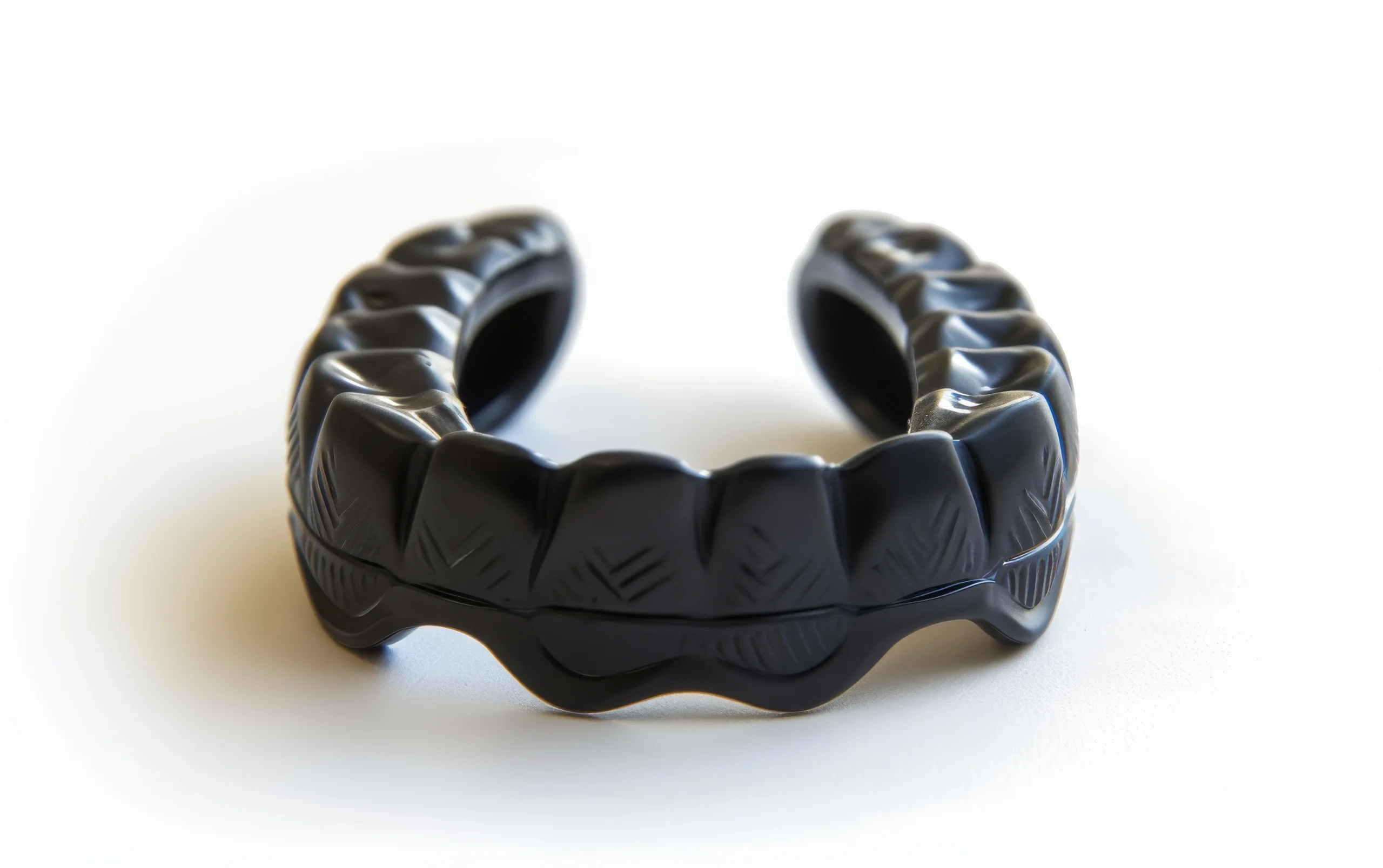Wearing braces comes with the responsibility of safeguarding your smile, especially during physical activity or contact sports. While braces are designed to align teeth and improve oral health, they also increase the risk of injury to the lips, cheeks, and teeth if not properly protected. That’s where choosing the right mouthguard for braces becomes essential, not just for comfort, but for long-term dental safety.
Ipswich locals, particularly teens and athletes, often find themselves needing a reliable solution to protect both their orthodontic work and overall oral health. With various types of mouthguards available, from custom-fitted to boil-and-bite, it’s important to understand which design best suits your specific needs, lifestyle, and stage of orthodontic treatment.
Selecting the best mouthguard for braces involves more than just fit; factors like material quality, sport intensity, and brace coverage all play a role. In this guide, we’ll explore seven expert-backed tips to help you make the right choice confidently.
1. Choose a Braces-Friendly or Custom Mouthguard
Not all guards are created equal when you have braces. Look specifically for mouthguards labeled for orthodontic use or designed to cover brackets. These braces-specific guards have extra room around the wires so they won’t painfully pinch or cut inside your mouth.
Queensland’s sports guidelines make mouthguards mandatory for kids playing AFL, rugby, hockey, and similar sports, and strongly recommend custom-fitted mouthguards for athletes with braces. A snug, custom-made guard will cradle your teeth and braces. In practice, this means a dentist or orthodontist can take an impression or 3D scan of your braces and craft a guard that fits exactly over them.
2. Weigh Custom-Fit vs. Boil-and-Bite
Custom mouthguards offer the best protection and comfort because they are designed to fit your teeth exactly. They feel like a second skin and stay securely in place. The downside: once your braces are moved, a fixed custom guard may no longer fit properly. Braces shift teeth over time, so a guard that was perfect last week can become loose.
A practical workaround is a boil-and-bite guard made specifically for braces. These are affordable, available at pharmacies or sporting goods stores, and can be remoulded as your bite changes. You heat them in hot water and bite down to form around your braces. Cleveland Clinic points out that store-bought guards (including boil-and-bite) are cheaper but generally less effective at preventing injuries than custom-fitted ones, so treat boil-and-bite as a good compromise, not a perfect solution.
3. Ensure a Secure, Comfortable Fit
Fit and comfort are make-or-break factors for mouthguards. Your guard should feel snug; it shouldn’t easily shift if you bite or pull on it, but it also must allow you to breathe, speak, and swallow normally. Experts advise a thickness of about 3–4 mm over the teeth for shock absorption. When testing a guard, say a few sentences and take a deep breath; if you’re gasping for air or can’t talk, try a thinner model or trim the edges (professionally if possible).
For braces, comfort is especially important. If the guard’s plastic feels too tight against your cheeks or gums, it’s more likely you’ll ditch it mid-game, defeating the purpose. Practice putting the guard on and off quickly, and see if it stays in place when you open your mouth wide. It should flex with normal jaw movement and not trigger any sore spots on your brackets. If you feel any sharp edges or too much pressure, it’s worth re-fitting or consulting your dentist. A well-fitted guard should feel like a secure part of your mouth, not a bulky foreign object.
4. Prioritize Durable, Safe Materials
Quality construction matters because a flimsy guard won’t protect your teeth. When possible, choose a multi-layer or dual-material design. For instance, many custom guards use layered EVA plastic that absorbs impacts better than a single layer. Look for descriptions like “shock-absorbing” or “laminated” in product specs.
Also, pay attention to materials: avoid guards made from brittle plastics or unknown compounds. Medical-grade silicone or high-quality EVA is preferred, and make sure the guard is BPA-free and latex-free for safety and comfort. In practice, reputable brands (and your dentist) will not cut corners on material quality. When inspecting a guard, note if the plastic feels thick enough (around 4 mm) and not overly flexible.
Durability is part of safety. A mouthguard should withstand dozens of games, so check it regularly. If you see any cracks, holes, or stretched areas, or if your teeth have moved enough that it no longer fits, it’s time to replace it. Custom guards, with proper care, can last several years, but even those should be inspected annually. A ripped or misshapen guard will not protect you from a forceful hit.
5. Keep It Clean and Ready
A dirty, warped guard is almost useless. Always rinse your mouthguard in cool or lukewarm water (never boiling!) after each use. Gently brush it with a soft toothbrush and mild soap at least once a week to remove bacteria and grime. Then store the guard in a ventilated plastic case, ideally one that has air holes to prevent mold buildup. Never leave your mouthguard baking in the sun or submerged in hot water, as heat can change its shape.
Before every practice or game, take a quick look at the guard. Make sure it hasn’t developed any tears or rough edges. If it has warped or become too loose, time for a replacement. It’s also wise to bring your mouthguard to dental appointments. Your dentist or orthodontist can give it the once-over: “Ensure it is in good condition” at each visit and help fix or replace it if needed. By treating your mouthguard with care, cleaning and storing it properly, you’ll maximise its life and keep it ready to protect you.
6. Match the Guard to Your Sport
Different sports have different risks, and your mouthguard choice should reflect that. In Ipswich, popular contact sports include rugby, Australian football (AFL), and hockey, all of which involve high-speed impacts. Experts warn that sports like hockey and rugby have among the highest rates of dental injury, so a robust mouthguard is non-negotiable in those games. If you’re wearing braces and diving into a contact sport, pick a thick, heavy-duty guard (usually custom or premium boil-and-bite) that offers full coverage.
By contrast, for lower-impact sports (like running, cycling, or non-contact netball), a thinner guard can suffice. But here’s a tip from the research: any sport with a ball, sticks, or collisions carries some risk, so wearing a guard is always wise. Smartplay notes that wearing a properly made guard in any sport will protect against dental injuries. In practice, this means you should ask your coach or check the league rules; many school and club competitions in Queensland now require mouthguards for players, especially those with braces.
7. Seek Professional Fitting and Advice
Finally, remember that you don’t have to go it alone. Orthodontists and sports dentists love fitting mouthguards; it’s part of keeping you safe. Many provide braces-friendly mouthguard services. An expert fitting means they’ll account for exactly how your braces sit and make adjustments for any bite issues.
Don’t hesitate to ask your dentist or orthodontist for guidance: they can recommend the right type, take impressions or scans if needed, and even offer color or team-logo options to make your guard more fun. They will also show you how to wear it correctly around your braces, and when to get a new one as your teeth move. Many dental clinics in Ipswich understand the local sports scene, so they’re used to crafting guards for active kids and adults with braces.
In short, see a dentist or orthodontist for your fitting just as you do for braces adjustments. It’s the safest way to ensure your guard works as hard as you do.
Protect Your Braces with the Right Mouthguard
Choosing the right mouthguard for braces is a crucial step in protecting your teeth, gums, and orthodontic work, especially if you’re involved in sports or physical activities. From understanding the difference between custom and boil-and-bite options to knowing how to fit and care for your mouthguard, the right information empowers you to make a safer, smarter choice.
As discussed, key factors like comfort, durability, proper fitting, and brace compatibility should all be considered when selecting a mouthguard. Whether you’re a teen playing footy or an adult maintaining active routines, a well-fitted mouthguard for braces is an investment in both safety and peace of mind.
For personalised advice and professional mouthguard fittings in Ipswich, visit Raceview Complete Denture Care. Our experienced team specialises in crafting braces-friendly mouthguards tailored to your needs. Book your consultation today and protect your smile with a custom solution designed for comfort, function, and long-term dental health.
FAQs:
-
Can I wear a mouthguard over my braces during sports?
Yes, wearing a mouthguard over your braces during sports is highly recommended. It protects your teeth, brackets, and soft tissues from impact and reduces the risk of injury during contact or high-impact activities.
-
Are sports mouthguards safe for kids and teens with braces?
Yes, but only if they’re made to fit over braces. Choose a custom mouthguard for braces with flexible materials and enough space for brackets and wires.
-
How often should I replace my mouthguard?
You should replace your mouthguard if it becomes loose, damaged, or after major orthodontic adjustments. Boil-and-bite mouthguards may need replacing more frequently, while custom ones can last longer with proper care.



